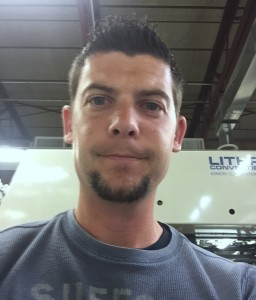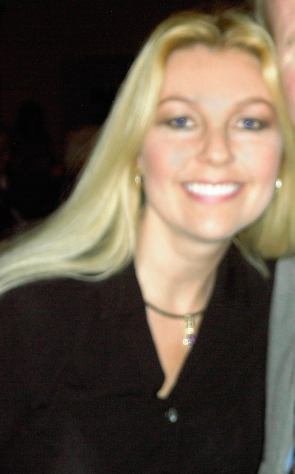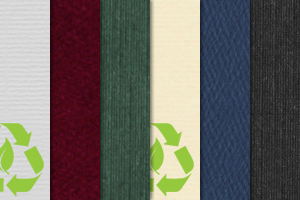At Warwick Publishing, we’re proud to call ourselves paper experts. We make it a priority to print our line of promotional calendars, frames, folders and greeting cards on the best quality papers for consistency and durability. We recently sent a few team members out to the paper mill to keep up to date with the latest technology and practices in papermaking, and to get a first-hand look at how paper is actually made. Each employee who attended represents a different division at Warwick, to ensure that our entire team has a cohesive understanding of the papermaking process and how it impacts the products we manufacture.
Here’s what they had to say about the experience:
 Phil Martin – National Sales Manager
Phil Martin – National Sales Manager
I’ve been working with paper in some way, shape, or form for the last 30 years, but before this visit, I’d never seen how it was made. Bottom line – there’s a lot that goes into making paper. It all starts as simple wood pulp or recycled paper pulp and 90% water, then ends up with less than 10% water at the end. The water composition changes with the season, which adds challenges with the paper making process.
This being my first time at a paper mill, I was like a googly-eyed little boy walking through the facility. You cannot even fathom how huge the equipment is that makes the little pieces of paper that we see and use every day. The largest machine was two football fields long, and about 50 feet tall, and I believe it made paper rolls 26 feet wide.
I was also impressed by the minimal number of people it takes to run the equipment. Here you have a machine two football fields long and all you see is about three people at computers. BUT, from what I understand, if there is a break or malfunction– it becomes all hands on deck. These machines run 24/7 – 362 days a year. If one goes down, it can take up to 12 hours or more to get it back online and running.
Sustainability in Papermaking
The paper mill has their own water treatment center which pulls water in from the river to be used in the paper manufacturing process. The filtration at the facility results in cleaner water output than what originally came into the mill. They also recycle their manufacturing excess. If there’s paper waste leftover after a run, it goes back into another batch of paper.
Positive Impact on Our Team and Our Customers
Our partner mill is definitely on the cutting edge of paper making, which can only benefit our clients. They have some very high-tech quality control and can trace exactly where our paper came from if we have a problem — right down to the specific roll, and when it was made.
I now have a much better understanding of the differences in paper sizes, thickness, and coloration, which is extremely helpful from a sales perspective. The knowledge I gained helps me make better product recommendations to our distributors and clients. I can see us utilizing some different papers in our product line down the road as well.
I got hands-on training with running the printing press, which I really enjoyed. The mill we partner with is one of the few paper manufacturers that actually has a printing press in-house…most mills go outside to test printing of papers. Our mill has a Komori press similar to the one at our facility, so we know that what they’re testing at the mill will reflect the printing process we have in our factory. I have been by our press a hundred times, but getting a hands-on opportunity to operate a four color press for myself was very useful. I have a new respect for our printing team and press managers — and I never realized how much ink it takes to print.
Another interesting exercise that we did towards the end of training was looking at some client complaints, and we diagnosed whether the problems were caused by the paper, ink, press, or press operator. After learning about how paper is made and how the various printing processes affect the paper, I know that we’ll be able to educate our customers more effectively and improve our production.
Jamie Michels – Printing Manager
This was my first visit to the mill. It was fascinating to see what goes into making all the different kinds of paper. The high-quality standards and production processes at the facility are very impressive. We’re definitely working with a mill that provides excellent raw paper products with virtually no waste material. We work with paper all day every day, so it’s really helpful to get the full view of what our paper can do from an inside perspective.
Technology and Color Matching
The mill uses state of the art technology to ensure their product is as good as it can get. My biggest takeaway from the trip was learning about different brightness and grades of paper and how colors appear differently under certain types of lights. Matching colors and printing high-quality images is what we do here at Warwick. Having knowledge of how ink colors and paper shades reflect differently under specific lighting allows us to achieve better color matches. It also allows for smoother printing from our four color process screens. Certain shades of brightness will enhance pictures differently, so that knowledge helps us educate our customers on making the right paper choices for their final product.
Quality Control
Seeing and understanding how the paper mill tracks their quality was very helpful as well. We’re able to identify paper issues much more efficiently by tracking the information that comes from the labels on each skid of paper. If we have a paper issue, with the right information, the mill can track when it was made, by who, what exact time, and any contributing factors that took place during the paper making process.
 Sandy Peterman, Purchasing Manager
Sandy Peterman, Purchasing Manager
This was my second trip to the mill. I had been several years ago and wanted a “refresher” course. It’s great to see the family atmosphere and breadth of knowledge they have there. The group of owners all stem from the original management team, and everyone works together really well. They’re such a great mill to work with, and they really care about our relationship. Many of their managers and reps have visited our factory too, and they will check up with us periodically to make sure everything’s okay. In my experience, not many other mills are like that.
Purchasing the Right Paper for the Job
When it comes to buying the paper for our products, it starts with me. When we get custom jobs, I need to look at all of the different aspects to determine the ultimate goal of the paper for each order. The experience our team gained at the mill helps us to educate customers on the different options they have, and what paper stock will be the best fit for both their vision, and their budget.
Seeing the papermaking process first hand allows me to guide our customer service team in asking more detailed questions like — how much does the customer want to spend? And, is there a certain reason they want 12 pt versus 16 pt? What will be printed on the product, and how much ink coverage will there be? What is the ultimate look they’re trying to achieve? Will they be mailing these or handing them out to their recipients? One thing to consider with mailing is how far the product will be going– it can be more costly to mail product made of a thicker paper. On the flip side, if it’s a bigger size product like an 8×10 photo folder, they’ll probably want a heavier paper stock to make it sturdier. With some basic knowledge about the end use and delivery method for the product, I can determine the type of finish the paper should have, the brightness, opacity, and appropriate coating, if any. Then, I can find the best paper at the right price point for what they’re trying to do. I can help our customers create a promotional product that’s really cool and stylish, or guide them towards something more economical that will still achieve what they want.
Ink Testing and Paper Problem Solving
I buy our paper by the truckload, and if we ever have an issue with the stock we receive, our mill is great about testing the inks and testing the solutions to come up with a fix for us. Their chemical engineers are some of the best in the business. In my role, I may deal with anything from a paper coating issue, to something getting stuck into the paper when it was being made. Issues can even stem from when we receive the paper on the floor – maybe they didn’t wrap it properly and there’s paper falling off the skid, or simply the paper wasn’t cut properly.
A Unified Production Team
As a result of our visit to the mill, we’re all more knowledgeable. Each department here at Warwick plays an important part in production, from sales to order entry, to design, to printing – everyone who’s involved sees what’s required to get the correct paper for what the customer wants. We’re all on the same page in making that our ultimate goal, and we’re more understanding of what it takes from each department in order to make that happen.
 Lindsay Fritch, Assistant Prepress Manager & Designer
Lindsay Fritch, Assistant Prepress Manager & Designer
This was the first paper mill I’ve visited, and I thought the whole set up was great. We were able to speak one-on-one with our reps and chat with other customers who work in different fields of the paper industry to learn about their presses and production techniques.
While touring the mill, I couldn’t believe how big the facility was, and was amazed at the size of the machines there. They took us through the whole process of how they create different formulas of paper for different customers. I really enjoyed learning how they apply different types of coating and the different types they offer. We even discovered some that we don’t use now, but could benefit us in the future.
Digital Printing and Design
Along with prepress, I also run the digital printers. Learning about the paper coating process helped solidify my understanding of what we can and cannot do when it comes to digital printing. Learning about different brightness and grades also helps our team with the whole design process. Because colors and shades can reflect differently on different paper coatings and with different grades, the knowledge we gained at the mill helps a great deal when matching color. Having an understanding of the various factors that impact color matching like brightness and coating helps match photos and select the best paper to help enhance a specific item.
Overall I really enjoyed going to the paper mill! I thought it was extremely helpful not only as a prepress manager and working with design and digital printing, but also gave me a better understanding of the Komori jobs and how presses run out in the factory. I would highly recommend this class for almost all our employees. There is so much to gain from it and I think it will make me a better designer, printer, and prepress manager.

